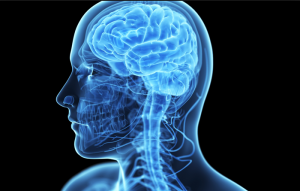 Stroke and Exercise
Stroke and Exercise
At Specialised Health, a significant number of customers we work with in the Life Insurance sector have been affected by cardiovascular disease often culminating in a stroke. At present in Australia, health education bodies are working hard to increase the awareness of cardiovascular disease and how to prevent heart attacks and strokes but what do you do if it has already occurred? Two of Specialised Health’s Exercise Physiologists, Biara Webster and Michael Czaplowski, dig deep into the condition to help you understand what to do next.
What is a Stroke?
A stroke is caused by the loss of blood flow to a region of the brain which more than often than not is due to underlying cardiovascular disease. There are two types of stroke with the most common being ischemic stroke, which attributes to 87% of all strokes and is caused when a clot is formed in the cerebral artery stopping blood flow to the brain resulting in brain damage. The less common type of stroke is a haemorrhagic stroke which is caused by excessive bleeding in the brain following rupture of the cerebral artery.
Stroke is a leading cause of both death and disability within Australia, and abroad, with the resultant brain damage potentially impairing voluntary muscle movement, muscle spasticity, cognition, speech, vision, and judgement. 65% of stroke survivors suffer a disability which impedes their ability to carry out daily living activities independently due to impairments in physical and/or mental capacity which, understandably, decreases and overall quality of life. Physical rehabilitation is therefore essential for recovery.
Why exercise?
Exercise therapy is one of the most common treatment interventions following a stroke and research has shown that even small increases (8-15%) in aerobic capacity may make a significant difference between a patient being dependent or independent in their daily living. Recent research has also found that aerobic exercise improves markers of brain repair, this phenomenon is known as neuroplasticity.
The average aerobic capacity of a stroke patient is 70% of the level which has been flagged as the cut off marker for independent living. Despite their prevalence most outpatient rehabilitation programs are not challenging enough for patients to induce the required metabolic response to illicit a significant improvement in aerobic capacity.
The importance of aerobic conditioning exercise for post-stroke patients cannot be undervalued as neurologically impaired patients, such as those who have experienced a stroke, require higher oxygen levels compared to the healthy population when performing activities of daily living and ambulation – the focus needs to be on increasing aerobic capacity as soon as possible following a stroke. Evidence has shown us that aerobic exercise therapy should be implemented as soon as possible following a stroke however the individual needs to be medically stable in terms of cardiovascular, hemodynamic, and neurological status.
Resistance and flexibility training are also critical to include in a well-designed exercise program as post-stroke clients are likely to demonstrate reduced muscular strength and endurance, as well as muscle spasticity.
The main benefits of exercise on post-stroke rehabilitation include:
- Improve strength and endurance
- Improved walking ability
- Improved ability to perform activities of daily living
- Improved balance and coordination
- Improved flexibility
- Improved mood
- Improved ability to think and alertness
Which exercise is best?
Despite the glaring importance that should be placed on performing aerobically challenging exercise, in this population there is no one size fits all approach as every patient will present differently and have differing functional limitations – it is important to openly discuss the patient’s goals and tailor their exercise program towards these. Goals may be based around a daily activity, self-care, work, a hobby, or simply being able to be independent. A successful exercise intervention will tailor exercises towards personal goals rather than take a generalised approach, however, we’ll break down the different exercise interventions here.
Aerobic exercise
An increase in aerobic fitness as small as 8-15% has been shown to influence a functional status from dependent to independent.
The type of aerobic exercise that is able to be added to a exercise program will depend on the patient’s current level of function however a variety of modes (eg walking, water exercise, and cycling) is preferred as they each have their own benefits. Weight-bearing exercise, such as treadmill walking, is highly recommended due to the effect it can have on maintaining bone mineral density. Treadmill exercise also may aid in improving balance, coordination, and improving gait abnormalities. Water exercise has been shown to improve aerobic fitness and strength, as well as being safer for those who may be at a risk of falls. Finally cycling has been shown to improve stair-climbing ability in post-stroke patients. Aerobic exercise should be progressed by intensity rather than by duration, this is complemented by recent studies that showed that high intensity interval training (HIIT) caused greater improvement in functional capacity within this population
How often: 3 to 5 days per week for 15 to 30 minutes
How hard:40% to 80% heart rate reserve
Resistance Training
Due to the neuromuscular dysfunction that is likely to be evident within this population, resistance training should be an important part of a tailored exercise program. Lighter elastic band and bodyweight exercises, or even exercises against gravity, may be most appropriate due to likely low-level muscular strength and endurance levels. Exercises should be tailored towards improving the patients’ ability to perform activities of daily living or personal goals. Dual tasking exercises, such as completing an indoor obstacle course while bouncing a ball, have been shown to improve walking ability and should be implemented into a successful exercise program.
How often: 3 to 5 days per week for 30 to 45 minutes
How hard:As tolerated, up to 80% of one repetition maximum
Flexibility
Conventional flexibility exercises should be performed however it is important to take into account that some patients may struggle with being able to get down or up from ground level so modifications may be required. The focus of a flexibility program should be on the affected limbs, particularly those that experience high levels of spasticity.
How often: 3 to 5 days per week for 10 to 15 minutes
How hard:Below point of discomfort
Other important things to consider
Fatigue is a common barrier within this population. An appropriately prescribed exercise program can improve fatigue symptoms.
At Specialised Health, in addition to provision of exercise we assist in fatigue management through activity and symptom recording with activity pacing education (if this is not already being provided by other members of their rehab team) and Heart Rate Variability monitoring.
Look out for some more articles to come from Specialised Health on Heart Rate Variability and how it can be used in fatigue management.
Where is future rehabilitation heading?
The future of stroke rehabilitation is looking exciting with promising research happening in:
- Motor imagery
- Virtual reality
- Video games
- Respiratory muscle training
- Non-invasive brain stimulation.
For right now though, if you or someone you know has had a stroke but isn’t exercising please get them in contact with an Exercise Physiologist.
Seeing improvements, big or small is why we do what we do as Exercise Physiologists.
Authors

Michael Czaplowski
Exercise Physiologist

Biara Webster
Exercise Physiologist and Content Manager
References
Austin, M.W., et al., Aerobic exercise effects on neuroprotection and brain repair following stroke: A systematic review and perspective. Neurosci. Res. (2014), http://dx.doi.org/10.1016/j.neures.2014.06.007
Moore et al, Effects of Community Exercise Therapy on Metabolic, Brain, Physical, and Cognitive Function Following Stroke: A Randomized Controlled Pilot Trial, Neurorehabilitation and Neural Repair 2015, Vol. 29(7) 623–635, DOI: 10.1177/1545968314562116
Mang et al., Promoting Neuroplasticity for Motor Rehabilitation After Stroke: Considering the Effects of Aerobic Exercise and Genetic Variation on Brain-Derived Neurotrophic Factor, Phys Ther. 2013 Dec; 93(12): 1707–1716. doi: 10.2522/ptj.20130053
Chaturvedi et al., PNF in acute stroke, MOJ Anatomy & Physiology, Volume 5 Issue 6 – 2018
D Matlick, Stroke Rehabilitation: Therapeutic Exercise, Cinahl Information Systems, a division of EBSCO Information Services,2017